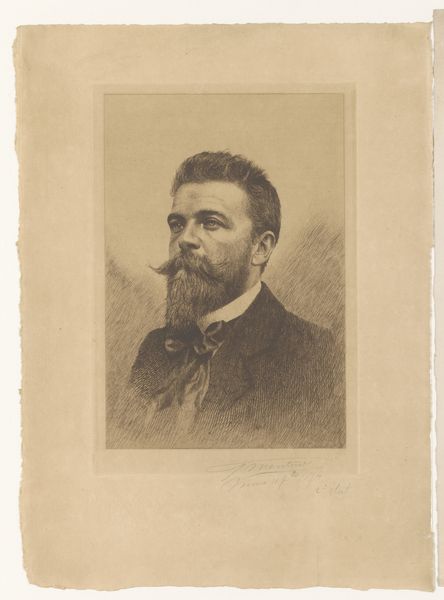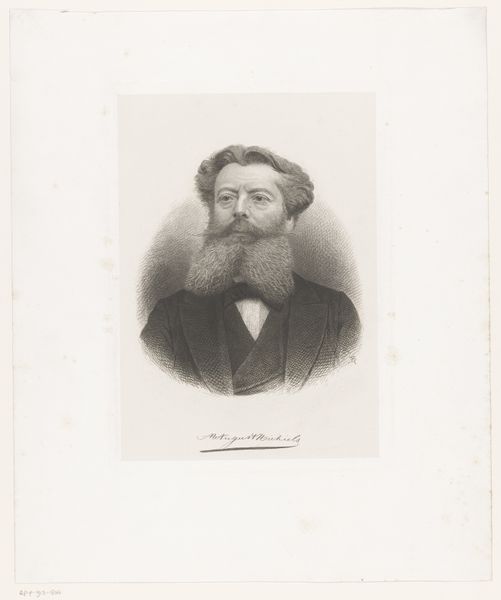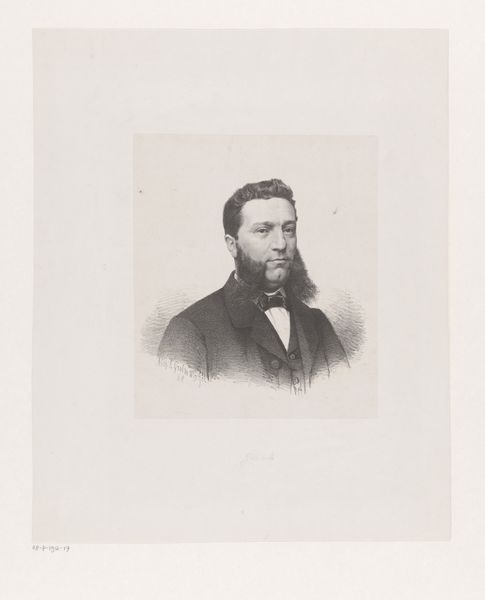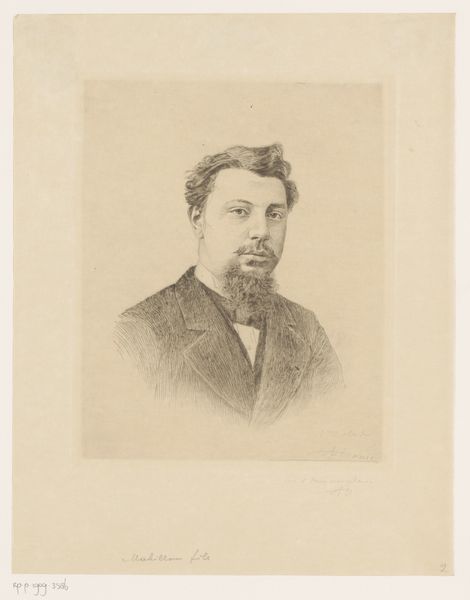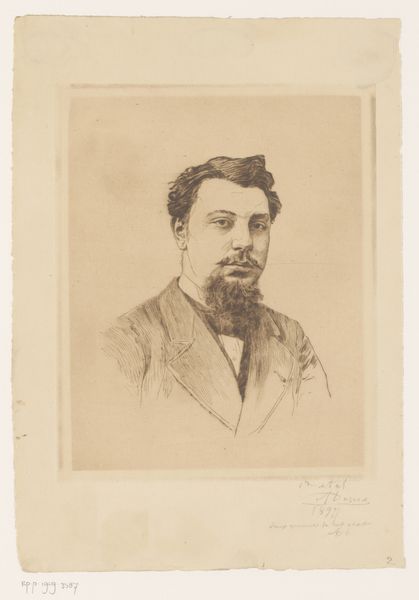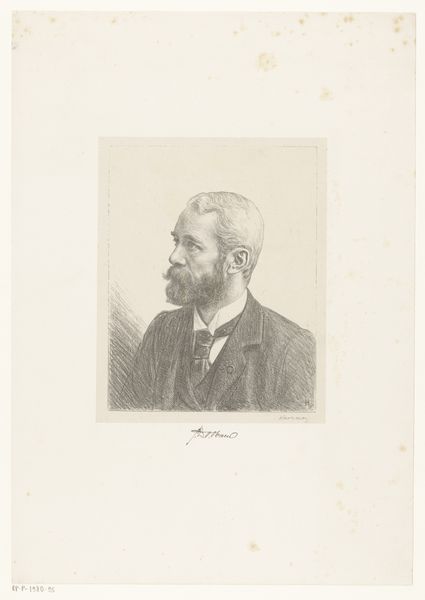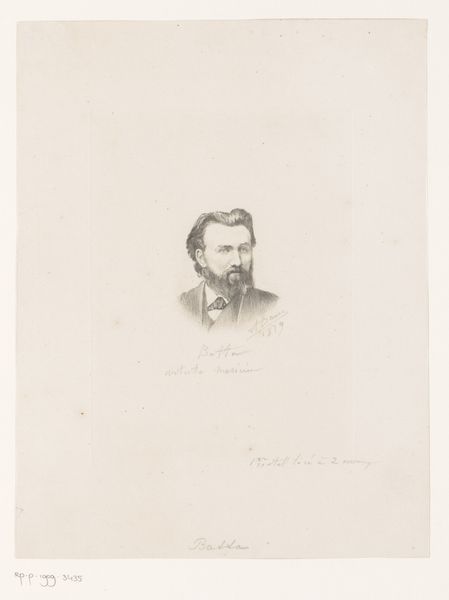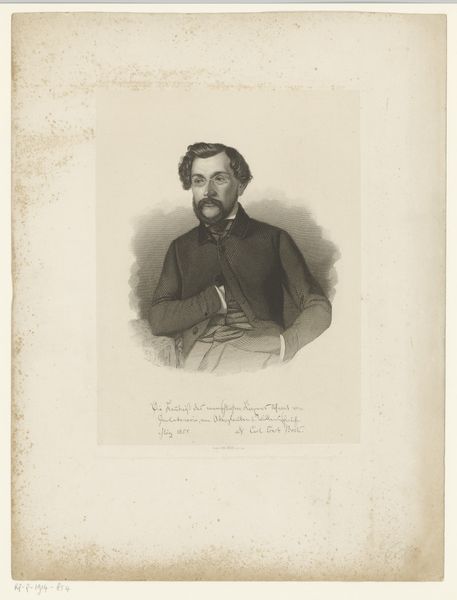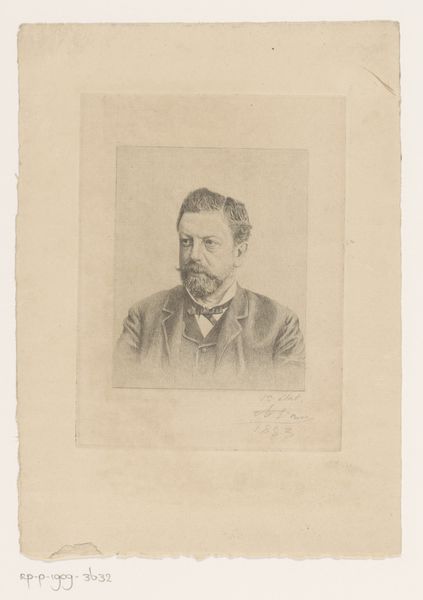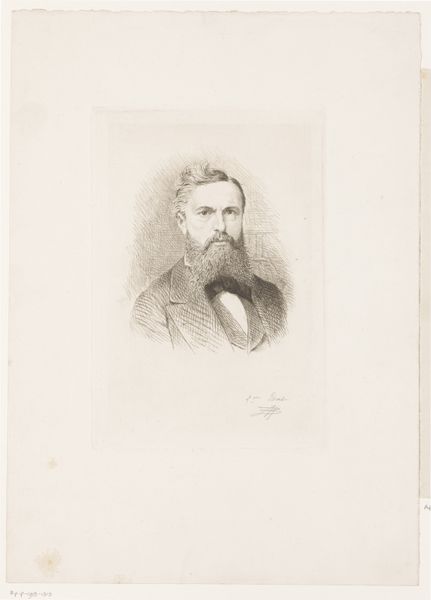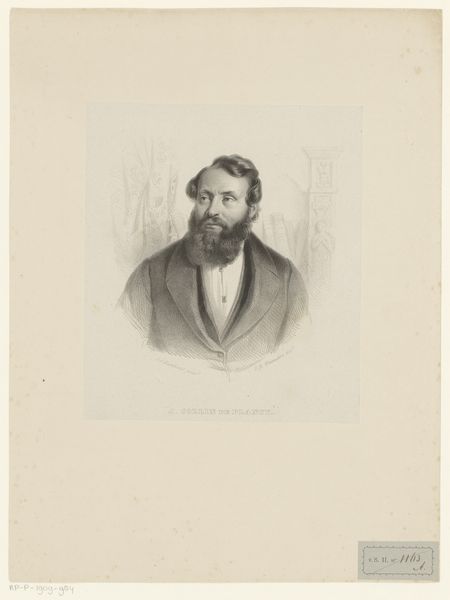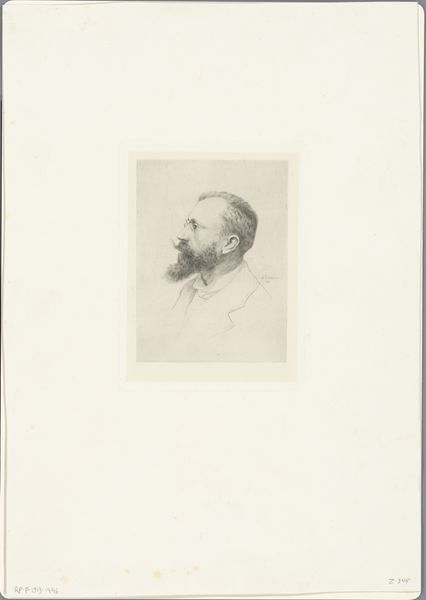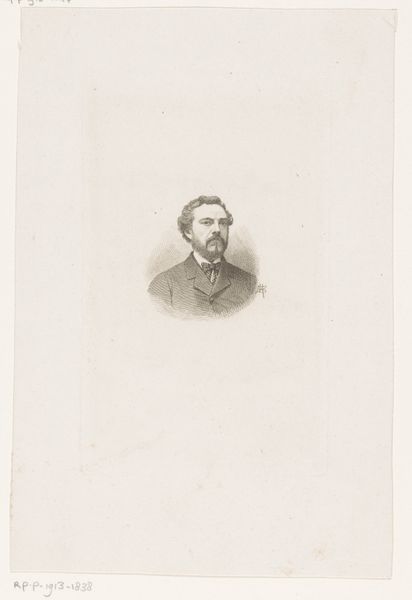
drawing, pencil
#
portrait
#
drawing
#
pencil sketch
#
charcoal drawing
#
pencil drawing
#
pencil
#
portrait drawing
#
realism
Dimensions: height 236 mm, width 160 mm
Copyright: Rijks Museum: Open Domain
Curator: The work before us, dating to 1894, is titled "Portret van een onbekende man, mogelijk Elle" by Georges Montenez. It is executed in pencil. What are your initial thoughts? Editor: Immediately, I'm drawn to the hatching technique and the relatively humble medium. The material limitations, and I suspect labor intensity, shape the tone. There's a deliberate lack of flash, an understated seriousness. Curator: Absolutely. And the gaze he directs, just slightly off-center, gives a sense of thoughtful detachment. His beard, full and carefully groomed, signals status and perhaps a connection to artistic or intellectual circles of the time. What hidden meanings do you read? Editor: To me, the significance lies in what pencil allows—accessibility and a direct connection between artist and surface. No intermediary, like layers of oil paint or the complex technologies involved in printing. It puts the focus on the skill of Montenez’s hand. Is this sitter really important or is Montenez asserting artistry in quotidian labor and readily available materials? Curator: That’s an interesting point about the subversion of “high art.” But the realism suggests an interest in accurately representing the individual. There’s a very slight almost imperceptible symbolic rose that could symbolize some social movement like anti-alcohol movement prevalent at that time.. Editor: Possibly, but also consider how pencil as a commodity affected wider visual culture at the end of the 19th century. Its affordability made drawing—portraiture—more widespread as both a pastime and professional pursuit. That shift, the availability of materials, can give this artwork its full weight, I suppose. Curator: So, instead of decoding symbols, you see this as a mirror reflecting a change in art’s social landscape. A shift away from art as the preserve of the elite. It certainly grants us a valuable insight into that moment, when representation itself was being democratized through these drawing materials. Editor: Exactly. Curator: It adds so much depth thinking about this through the lens of accessible materials. Editor: A quick material study really grounds the piece for me. It resists some grand interpretations and offers something tangible.
Comments
No comments
Be the first to comment and join the conversation on the ultimate creative platform.
